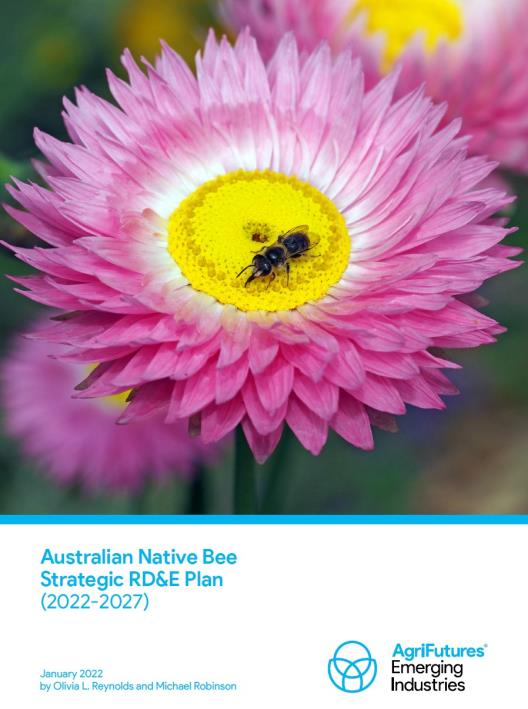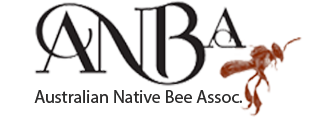Agrifutures invested in this plan because they identified native bees as a top emerging industry.

They carried out a highly effective engagement process to produce this plan. An outcome is that the Australian Native Bee Association (ANBA) is recognised as the peak industry body for managed and wild native bees, providing leadership, driving implementation of the RD&E Plan, and operating collaboratively across the industry.
We applaud the efforts of the AgriFutures consultants who drove the consultation process. Numerous project lead/team conversations were held over ZOOM, or over the phone with individual stakeholders to further develop ideas and contributions to the plan. Four major drafts were prepared, and meetings were held to ensure maximum input from the range of stakeholders.
Here is President Ian Driver’s presentation at the launch:
What an exciting time it is for our Australian native bees. To be recognised as an emerging industry and have the opportunity to work with so many stakeholders on the development of this report has been such a privilege.
We have so much to learn about the benefits of having these beautiful bees across our suburbs and farmlands. We know that our native bees are great pollinators, particular-ly for our native flora, including our bush tucker plants, but increasingly for our agricultural crops. Research continues in this space primarily through our universities. Already we have stingless bee hives being transported around farms for pollination purposes, but there is potential for our other solitary bees to be utilised for pollination through re-storing native vegetation around farmland to provide nesting habitat.
Our stingless bee honey is a rare and prized product, with its many medicinal properties and its low GI Trehalulose sugar. There is a current lack of supply of our honey and our markets are only sporadic. But as more honey becomes available into the future, the potential for more stable markets should be realised. This may then generate inter-est from the pharmaceutical and health food sectors around potential products.
Other resources such as native bee propolis and pollen are yet to be fully researched. Already there is a small niche market for beauty products from native bee propolis. Again, supply is an issue but this should improve as more native bee hives are created into the future.
Our stingless bees are now being used in the wellness in-dustry, with hives being kept in some rehabilitation cen-tres, where their meditative benefits are just being appreciated.
There has been a huge growth in the desire to learn about our native bees, and this has seen a significant increase in the education sector through native bee workshops and products. Native stingless bees have secured a spot in the pet industry as a low maintenance addition to the family home. Kindergartens and Schools are also introducing na-tive bees into their centres as the new generations learn about our bees.
Our industry’s biggest challenge is the biological constraint of breeding bees. We simply don’t yet have enough supply of native bee hives to meet the demand from the various competing sectors of farming, honey production, and pets. This will take some time, but that time will give us the opportunity to undertake the research to develop valuable and sustainable products and services into the future, while carefully managing the welfare and conservation of our bees.
Investment in research is critical, and there are a number of conservation and research projects currently being un-dertaken or in the planning phase. These are expected to discover even more exciting information about our bees.
The Australian Native Bee Association is proud to be the lead in this RD&E venture and we look forward to partner-ing with some of you into the future.
